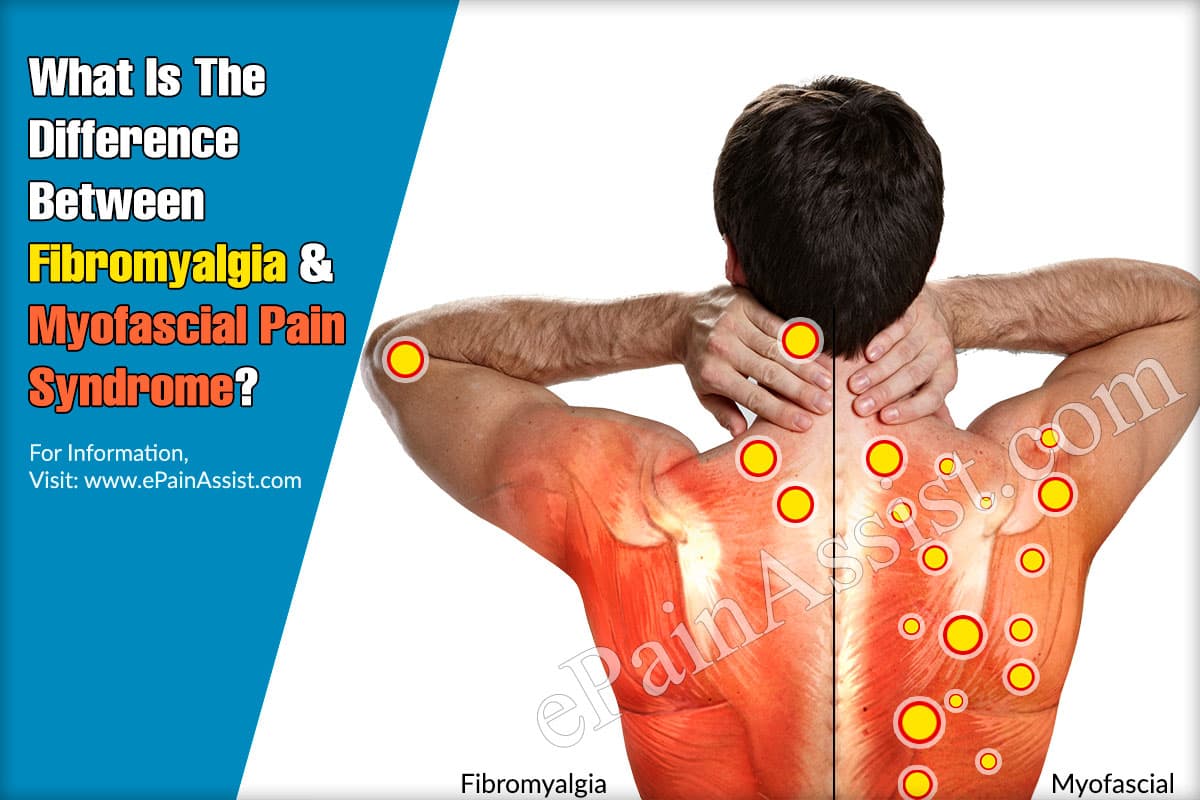Fibromyalgia and myofascial pain syndrome are associated with painful and tender muscles. However, there are certain differences between the two conditions which help incorrect treatment.

What Is The Difference Between Fibromyalgia And Myofascial Pain Syndrome?
In both fibromyalgia and myofascial pain, the patient experiences fatigue and muscle stiffness. Both the conditions are associated with the muscular system. However, deeper in the mechanism, both are different. The trigger points are the important parameter to distinguish between both the conditions. While myofascial pain syndrome has localized trigger points through which the pain is radiated. These trigger points are lesser in number in case of myofascial pain, while in the fibromyalgia, the trigger points are generalized and are more in number. This indicates that the pain in fibromyalgia is more spread throughout the body as compared to myofascial pain syndrome. The taut band in the affected muscle in myofascial pain syndrome is seen while this band may or may not be visible in fibromyalgia. The referred pain is more in myofascial pain syndrome as compared to fibromyalgia due to the latter’s generalized presence. The pain of fibromyalgia affected both the muscles and joints while pain in myofascial is limited only to the muscles. The mechanism of the generation of pain is different in both the condition. The pain in myofascial is caused due to the formation of tender muscle knot while pain in fibromyalgia is centrally in origin due to abnormal sensitivity of pain in the brain.(3)
Fibromyalgia
Fibromyalgia is the condition characterized by the presence of widespread musculoskeletal pain. Along with the pain the patient also experiences fatigue, difficulty sleeping, increased sensitivity to pain, muscle stiffness, headache, and gastrointestinal discomfort. The condition is caused by the increased sensitivity of the brain for pain. The mental ability of the patient to focus and concentrate is also reducing leading to the condition called fibro-fog. The patient suffering from fibromyalgia has a high risk of developing temporomandibular joint disorders. Although the exact cause of fibromyalgia is not known the condition is believed to be caused by infection, mental and physical trauma and genetics also play an important role in developing the disease. The patient suffering from other musculoskeletal disorders such as osteoarthritis and rheumatoid arthritis, risk of developing fibromyalgia increases. Due to the repetitive stimulation of the nerve, the process through which the brain perceives the pain gets disrupted due to an abnormal concentration of the neurotransmitters. Further, the brain becomes extra sensitive to pain leading to overreacting to pain signals.
Myofascial Pain
Various myofascial trigger points are present on the skeletal muscles. They are present in close association with the nodules of the muscle fibers. There is less information about the mechanism of myofascial pain as to how these points trigger to cause pain in various parts of the body. The concept of myofascial knots is generally used by chiropractors, physiotherapists, and osteopathic professionals. There is a referred pain occurring in certain areas of the body. The practitioners try to find out the place from which the pain is emerging. Different practitioners have different ways of diagnosis and identification of the trigger point. Compression of the trigger point results into generation of referred pain, or twitch at the site of compression. The pain due to the compression of a trigger point may be stagnant or progresses with time sometimes leading to severe pain. Treatment options are available for managing the pain. This includes physiotherapy, pain medications, trigger point injections, and various relaxation techniques. The patient may also experience local tenderness or a tender not in the muscle. The condition is most commonly found in patients who have repetitive use of the muscles such as while during a job; risk of myofascial pain increase with a muscle injury.(1) (2)
Conclusion
Myofascial pain has fewer trigger points as compared to fibromyalgia which has generalized trigger points. Myofascial pain causes less discomfort in terms of sleep, headache, and fatigue as compared to fibromyalgia.
